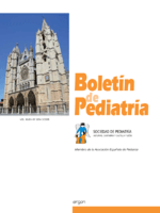Técnicas para el diagnóstico molecular de enfermedades hereditarias
F. Claverie Martín , E. Ramos Trujillo , F.J. González Paredes
Bol. Pediatr. 2008; 48 (205): 235 - 241
El diagnóstico de muchas enfermedades hereditarias necesita una confirmación a nivel molecular del defecto genético que presenta el paciente. Una vez detectada la mutación y confirmado el diagnóstico clínico, podemos determinar cuál es el efecto de dicha mutación en la proteína codificada (cambio de conformación, alteración o pérdida de función, localización errónea, disminución en su expresión, etc.), y así poder abrir puertas a nuevas terapias dirigidas al defecto específico. En esta revisión, primero consideraremos algunos conceptos básicos de genética molecular, incluyendo estructura y expresión del gen, intrones y exones, códigos genéticos, transcripción, traducción, procesamiento del RNA y mutaciones y sus tipos. También explicaremos algunos métodos para extraer DNA y RNA de sangre u otros tejidos del paciente. A continuación discutiremos los métodos que se emplean para detectar mutaciones en genes asociados a enfermedades hereditarias. El principio en el que se basa un ensayo de detección de mutaciones es que la secuencia de nucleótidos del gen de un individuo afecto será distinta de la secuencia de un individuo con fenotipo normal. Además, describiremos dos métodos para analizar el efecto de algunas mutaciones en la maduración del pre-mRNA (RT-PCR a partir de RNA de sangre y análisis de minigenes). Por último, mencionaremos algunos métodos informáticos que sirven para determinar si las mutaciones detectadas son patológicas o no, y para predecir el efecto de mutaciones en la maduración del pre-mRNA.
Techniques for molecular diagnosis of hereditary diseases
The diagnoses of many hereditary diseases must be confirmed on a molecular level of a genetic defect that the patient has. Once the mutation is detected and the clinical diagnoses confirmed, we can determine which is the effect of said mutation in the coded protein (changing shape, alteration or loss of function, erroneous location, decrease of its expression, etc.) and just be able to open the doors to new therapies aimed at the specific defect. In this article, we first consider some basic concepts of molecular genetics, including the gene structure and expression, introns and exons, genetic codes, transcription, translation, RNA processing, and mutations and its types. We will also give some explanations of methods to extract DNA and RNA from the blood and other tissues of the patient. After that, we will discuss the methods used to detect mutations in genes associated to hereditary diseases. The principal on which a mutation detection trial is based is that this sequence of gene nucleotides of an individual affected will be different from the sequence of an individual with normal phenotype. In addition, we will describe two methods to analyze the effect of some mutations in the maturation of pre-mRNA(RT-PCR from RNA of the blood and analysis of minigenes). Finally, we will mention some computer methods that serve to determine if the mutations detected are pathological or not and to predict the effect of the mutations in the maturation of the pre-mRNA.
Artículo completo (PDF) (89 kb.)
- Otros
